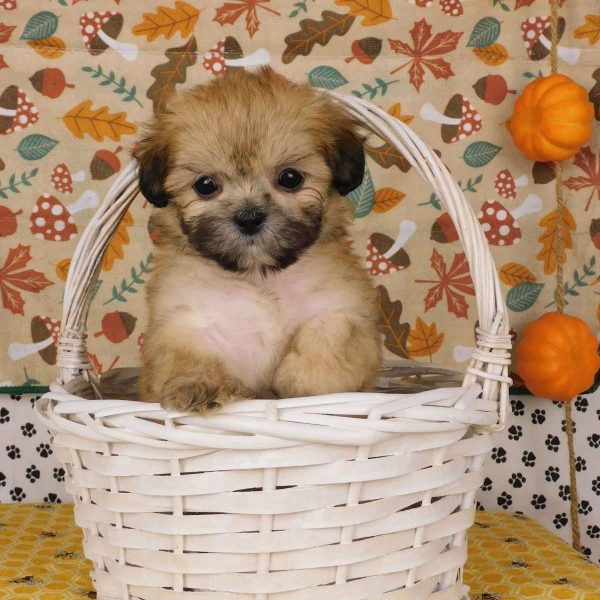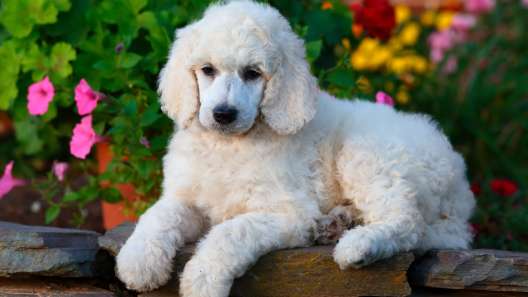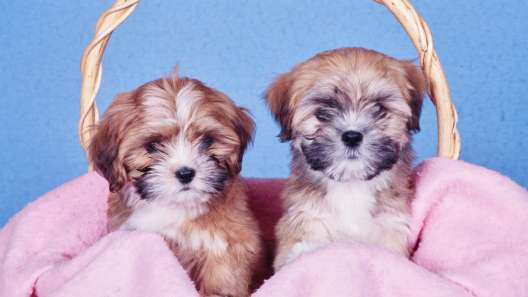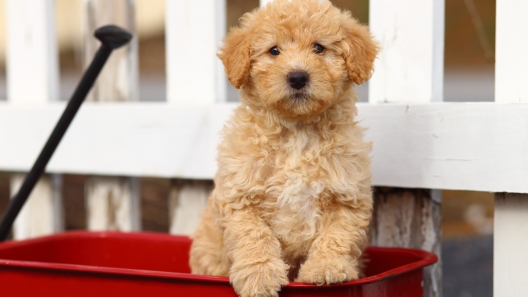
-
Activity Level:
moderate
-
Shedding Level:
low
-
Grooming Level:
high
-
Trainability:
high
-
Good for Novice Owners:
high
-
Adaptability:
high
-
Kid/Pet Friendly:
often
-
Prey Drive:
moderate
-
Watchdog:
very alert
- Average Size: Small
- Average Lifespan: 10-15 years
- Registered?: other
Lhasa-Poo Dog Breed Information
Overview
Temperament
Adaptability
Health
Owner Experience
Grooming
Activity Level
Size
Life Span
Did You Know?
The Lhasa-Poo is a designer dog breed that is a cross between a Lhasa Apso and a Toy or Miniature Poodle. Although a mixed breed can take on any combination of traits from the parent breeds, Lhasa-Poo tend to be friendly, affectionate, and playful dogs that are loyal to their families.
Because they are not a purebred dog, the Lhasa-Poo is not recognized by the American Kennel Club. However, they are recognized by other notable dog organizations like the Designer Dogs Kennel Club, American Canine Hybrid Club, and more.
This designer dog breed is a small dog with a big heart. They tend to be social and bond closely with their families. They tend to have a sweet, friendly disposition and a playful, energetic personality. They tend to get along well with children, other dogs, and other pets. Because their small size makes them susceptible to injury during accidental rough play or falls common to younger children, they are a better fit for older children who know how to interact appropriately with a dog and can handle them gently.
As with any dog breed, socialization and training early on are important and the same is true for the Lhasa-Poo. Without proper socialization and training, they can develop “small dog syndrome” that may make them combative or aggressive towards other dogs and strangers. They do make alert watchdogs, but they tend to be friendly dogs, so they do not tend to make good guard dogs. They can be prone to barking, but training early on can help curb this behavior.
Lhasa-Poo are highly adaptable dogs. Their small size makes them a good fit for apartment living and they adapt just as well to larger homes. They do well in most climates, but may need to bundle up in the winter to keep warm. Having some basic winter dog products on hand is a big help when the temperatures drop.
These small dogs are also sensitive to heat as with most dog breeds. So, it’s not a bad idea to learn the signs of heat stroke in dogs to make sure you’re staying safe when the temperatures rise too. Because these dogs thrive on attention and bond closely with their families, they do not like to be left alone.
A mixed breed can inherit the genetic conditions of one, both, or neither of the parent breeds. For the Lhasa-Poo, some health conditions to be aware of include hip dysplasia, patellar luxation, eye conditions, kidney problems, epilepsy, hypothyroidism, Addison’s Disease, Legg-Calve-Perthes Disease, Cushing’s Disease, and Von Willebrand’s Disease.
Reputable breeders will screen their stock to avoid passing genetic conditions to puppies. So, don’t be afraid to talk to the breeder about the genetic history of the parents and to ask about any relevant health clearances or test results.
Both of the parent breeds tend to be eager to please and highly intelligent. Although they tend to be easy to train, they can sometimes have a stubborn streak. So, your Lhasa-Poo can be highly trainable, but may have a stubborn streak, which can be challenging for first-time dog owners to navigate.
For this mixed breed, it may be a good idea to be prepared to enroll in puppy training and obedience classes. Aside from the training, these classes can help further strengthen the bond you have with your puppy and are also a great opportunity to socialize a puppy.
Lhasa-Poo tend to have a long coat that can be wavy or curly and can be clipped short. Although they do not shed much, they do need a lot of grooming in order for their coat to stay healthy. Because their fur is prone to tangles and mats, you will need to brush them daily. If their coat is clipped short, you can likely get away with brushing a few times a week. Bathing is on an as-needed basis, but your Lhasa-Poo will need professional grooming every 4-6 weeks.
In addition to coat care, you will also need to handle nail, ear, and dental care for your Lhasa-Poo. Nail trimming on a monthly basis is usually sufficient to keep them from growing too long. So, professional grooming sessions may take care of it. However, if your dog’s nails aren’t wearing down as much naturally, you may need to trim them more often. If you hear their nails clicking on the floor, it’s time to cut your dog’s nails.
It’s also a good idea to check your dog’s ears on a weekly basis and carefully clean them as needed. You’re looking to make sure they are clean, dry, and free of debris. This can help prevent ear infections. You also want to brush your dog’s teeth or use an enzyme toothpaste every day as this helps prevent painful dental diseases like gum disease and tooth decay.
Although they are small, Lhasa-Poo tend to have a moderate activity level and can sometimes have bursts of higher energy. Daily walks plus some playtime are usually enough for this dog. However, they love being with you and likely won’t mind some extra activity.
Try out a bunch of different activities to see what your dog likes to do best. They may enjoy taking an easy hike with you, going for trips to the dog park, or even swimming. Just keep an eye on them to make sure they aren’t overheating or overexerting themselves trying to keep up with you.
A fully-grown Lhasa-Poo usually stands 9-13 inches tall and weighs 10-20 pounds.
A Lhasa-Poo generally lives 10-15 years.
The Lhasa-Poo coat is a coat of many colors. They can have a white, cream, apricot, black, brown, or combination colored-coat.









